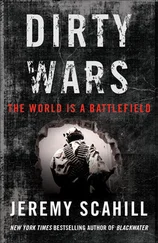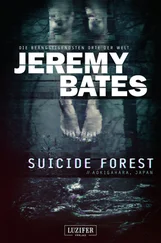Black would later brag, in 2004, that “over 70 percent” of Al Qaeda’s leadership had been arrested, detained, or killed, and “more than 3,400 of their operatives and supporters have also been detained and put out of action.” 61As part of this new “operational flexibility,” the CIA carried out “extraordinary renditions” of prisoners—shipping them to countries with questionable or blatantly horrible human rights records, where they were sometimes psychologically or physically tortured. The Washington Post reported that Black’s CTC heavily utilized its “Rendition Group, made up of case officers, paramilitaries, analysts and psychologists. Their job is to figure out how to snatch someone off a city street, or a remote hillside, or a secluded corner of an airport where local authorities wait.” 62According to the Post ’s Dana Priest:
Members of the Rendition Group follow a simple but standard procedure: Dressed head to toe in black, including masks, they blindfold and cut the clothes off their new captives, then administer an enema and sleeping drugs. They outfit detainees in a diaper and jumpsuit for what can be a day-long trip. Their destinations: either a detention facility operated by cooperative countries in the Middle East and Central Asia, including Afghanistan, or one of the CIA’s own covert prisons—referred to in classified documents as “black sites,” which at various times have been operated in eight countries, including several in Eastern Europe. 63
The CIA would provide the host countries with questions it wanted answered by the prisoners. One anonymous U.S. official directly involved in rendering captives told the Post , “We don’t kick the [expletive] out of them. We send them to other countries so they can kick the [expletive] out of them.” 64Another official who supervised the capture and transfer of prisoners told the paper, “If you don’t violate someone’s human rights some of the time, you probably aren’t doing your job,” adding, “I don’t think we want to be promoting a view of zero tolerance on this. That was the whole problem for a long time with the CIA.” 65
Black played an integral role from the very beginning in the use of “extraordinary renditions” in the war on terror, beginning in November 2001 when the United States captured alleged Al Qaeda trainer Ibn al-Shayk al-Libi. 66New York-based FBI agent Jack Cloonan felt that Libi could be a valuable witness against Zacarias Moussaoui and alleged would-be shoe bomber Richard Reid, both of whom had trained at the Khalden camp Libi allegedly ran. Cloonan told FBI agents to “handle this like it was being done right here, in my office in New York.” 67He said, “I remember talking on a secure line to them. I told them, ‘Do yourself a favor, read the guy his rights. It may be old-fashioned, but this will come out if we don’t. It may take ten years, but it will hurt you, and the bureau’s reputation, if you don’t. Have it stand as a shining example of what we feel is right.’” 68But that didn’t sit well with the CIA, which felt it could get more information out of Libi using other methods. Invoking promises of wider post-9/11 latitude in questioning suspects, the CIA Afghanistan station chief asked Black, then counterterrorism chief, to arrange for the agency to take control of Libi. Black in turn asked CIA Director George Tenet, who got permission for the rendition from the White House over the objections of FBI Director Robert Mueller. 69
The White House, meanwhile, had its lawyers feverishly working to develop legal justifications for these ultraviolent policies. It “formally” told the CIA it couldn’t be prosecuted for “torture lite” techniques that did not result in “organ failure” or “death.” 70Black had quickly earned an insider’s pass to the White House after 9/11, and his former colleagues said he would return from meetings at 1600 Pennsylvania Ave. “inspired and talking in missionary terms.” 71
A year later, with Osama bin Laden still at large, releasing videotaped messages and praising anti-U.S. resistance, Cofer Black abruptly left the CIA. Some charged that Defense Secretary Donald Rumsfeld had him fired after Black allegedly served as a “deep background” source for a Washington Post story published on April 17, 2002, that described how the Pentagon allegedly allowed bin Laden to escape after being injured at Tora Bora in Afghanistan. 72In its lead paragraph, the paper called it the administration’s “gravest error in the war against al Qaeda.” 73A month later, buried within another Post story on May 19, came this announcement: “In other developments yesterday, CIA officials said Cofer Black, head of the agency’s Counterterrorism Center for the past three years, has been assigned to another position. They described the move as part of normal turnover at the agency.” 74The UPI news agency later interviewed former CIA officials, one of whom said, “Black was fired. He was kicked out.” 75The news agency also reported, “Not only was Black fired, but he was barred from entering CIA headquarters. ‘That’s standard procedure if you’ve been fired,’ former CIA Iraq analyst Judith Yaphe told UPI. Humiliated, Black was restricted to an agency satellite location at Tysons Corner, which separated him from old, trusted colleagues and the comfort of familiar surroundings.” 76Black, however, was not yet finished in government and clearly retained friends in high places. On October 10, 2002, President Bush appointed him as his coordinator for counterterrorism, with the rank of at-large ambassador at the State Department . 77
Shortly after assuming his new post, Black spoke to a group of Egyptian journalists via satellite from Cairo, where he was pressed on several of the administration’s new “war on terror” policies. “I have been to Guantánamo,” Black told them. “I must say that I have been very well pleased. I mean, you know, you and I would be very lucky to be housed that way by our enemies.” 78It wouldn’t take long for controversy to hit him.
During the 2003 State of the Union address, President Bush declared, “Tonight, I am instructing the leaders of the FBI, the CIA, the Homeland Security, and the Department of Defense to develop a Terrorist Threat Integration Center, to merge and analyze all threat information in a single location. Our government must have the very best information possible.” 79As part of this mission, Black was to coordinate the government’s annual report on “Patterns of Global Terrorism,” which would serve as a report card of sorts for how the administration’s “war on terror” was progressing. A few months later, on April 30, 2003, Black released the report and claimed that 2002 had seen “the lowest level of terrorism in more than 30 years.” 80While there was little public scrutiny of the statement at the time, that would not be the case when Black released the report a year later and made an almost identical claim.
On April 29, 2004, with anti-U.S. resistance in Iraq exploding, Black and Deputy Secretary of State Armitage unveiled “Patterns of Global Terrorism 2003,” boldly claiming it showed that the United States was winning its loosely defined war on terror. “You will find in these pages clear evidence that we are prevailing in the fight,” said Armitage. The report, he said, was prepared “so that all Americans will know just what we are doing to keep them safe.” 81For his part, Black said that 2003 “saw the lowest number of international terrorist attacks since 1969. That’s a 34-year low. There were 190 acts of international terrorism in 2003. That’s a slight decrease from the 198 attacks that occurred the previous year, and a drop of 45 percent from the 2001 level of 346 attacks.” 82For the White House, the report was held up as clear evidence of a successful strategy; after all, the Congressional Research Service called the State Department’s annual report “the most authoritative unclassified U.S. government document that assesses terrorist attacks.” 83
Читать дальше












